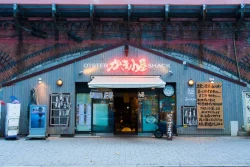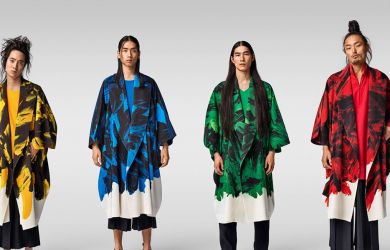
September 11, 2012
Dance Triennale Tokyo 2012
Shock of the new at Japan’s top contemporary dance fest
By Metropolis
Originally published on metropolis.co.jp on September 2012

At the other end of the spectrum from classical ballet, Tokyo possesses one of the world’s busier contemporary dance scenes. In contrast to the starkly uniform, white-painted bodies of Japanese butoh dancers, Japan’s contemporary dance community is a motley lot. Productions vary from the dystopian creations of Yoko Higashino’s Baby-Q company to the satirical pop revues of Ryohei Kondo’s Condors, reflecting Tokyo’s absorption and redefinition of diverse Western contemporary dance forms.
Symbolizing Tokyo’s ambitions to be an international culture capital are the arts festivals that have sprung up in the last decade. Among them is the Dance Triennale, Japan’s largest contemporary dance event. Sort of a Fuji Rock Festival for dance, it brings some of the world’s leading choreographers to Aoyama every three years to mount stages alongside Japan’s more innovative companies. An audience of 10,000 attended the 2009 edition—here are our picks for 2012.
YASMEEN GODDER
[pictured top]
Love Fire
Born in Israel, educated in New York and currently based back in Israel, Yasmeen Godder’s career typifies the globalized nature of today’s contemporary dance scene. A fixture of the Dance Triennale, Godder returns this time with Love Fire, a charged meditation on desire for herself and fellow dancer Matan Zamir. The piece is rendered doubly engrossing by the blinking black and red fluorescent lighting installation of artist Yochai Matos.
Spiral Hall, Oct 5-7

LIA RODRIGUES
Pororoca
The “pororoca” are waves up to four meters high that travel kilometers up the mouth of the Amazon River. In Brazilian choreographer Lia Rodrigues’s conception, they’re also a metaphor for the swirling chaos, poverty and crime in the favela slums of Rio de Janeiro, where she bases her dance company. Rodrigues’s early training was in ballet, but her contemporary dance pieces reflect the color, extroversion and dynamism that is today’s Brazil.
Aoyama Round Theatre, Oct 12-14
ALAIN PLATEL/LES BALLETS C DE LA B

Out of Context—For Pina
Self-taught director Alain Platel is a favorite in Japan, where the Belgian’s edgy, large-scale productions have struck a nerve. For the Triennale, Platel offers a tribute to recently deceased German giant Pina Bausch. Out of Context—For Pina marks a change in direction for Platel. A cast of ten dancers of various nationalities dances in little more than underwear to a dark score—a fitting tribute to Bausch’s sexualized and disturbing visions.
Aoyama Round Theatre, Oct 3-5
NACERA BELAZA/NACERA BELAZA COMPANY

Le Temps scellé/Le Trait
Representing France’s present-day multiethnic creative community, Algerian-born French choreographer Nacera Belaza debuts her new work Le Temps scellé. Three dancers are framed by soft white light on a stark black stage. They begin to bob and whirl like dervishes to a repetitive, hypnotic musical score. Meaning “time sealed,” the piece is a vehicle for Belaza’s explorations of the body and spirituality. Having established her company in 1989, Belaza has toured the world and received the Award for Choreographic Revelation from the Union of Theater, Music and Dance Critics in 2008.
Aoyama Round Theatre, Sep 27-28
ASIA FOCUS

Jecko Siompo, Choi Jin-han & Ryohei Kondo
Triennale 2012 offers both Japan and Asia “Focus” programs, with the latter to include a trio of short performances by artists from Indonesia, South Korea and Japan. Jecko Siompo hails from Papua, and blends Indonesian tradition with hip-hop to produce what he terms “Animal Pop.” Choi Jin-han, one of South Korea’s most distinguished dancers, presents his disturbing, slow-motion piece I want you to be happy. Ryohei Kondo is the extroverted, South American-born founder of Condors, beloved nationwide for its sendups of salarymen and schoolgirls. He is set to debut a duet, A Love Vacation.
Spiral Hall, Oct 9-10
STRANGE KINOKO DANCE COMPANY

not quite right
Director Chie Ito is at the forefront of a contemporary-dance movement that looks for the sublime in the banal. In not quite right, staged at Sydney Opera House among other venues, an ordinary room becomes distorted, everyday movements are exaggerated to the extreme, and some average-looking women become vessels for a psychedelic fantasy. Ito’s Through the Looking Glass creations earned her Rookie of the Year from the Dance Critics Society of Japan. She’s publicly known via her kitschy “Acerola Gymnastics” ads for Suntory.
Spiral Hall, Sep 27-29





